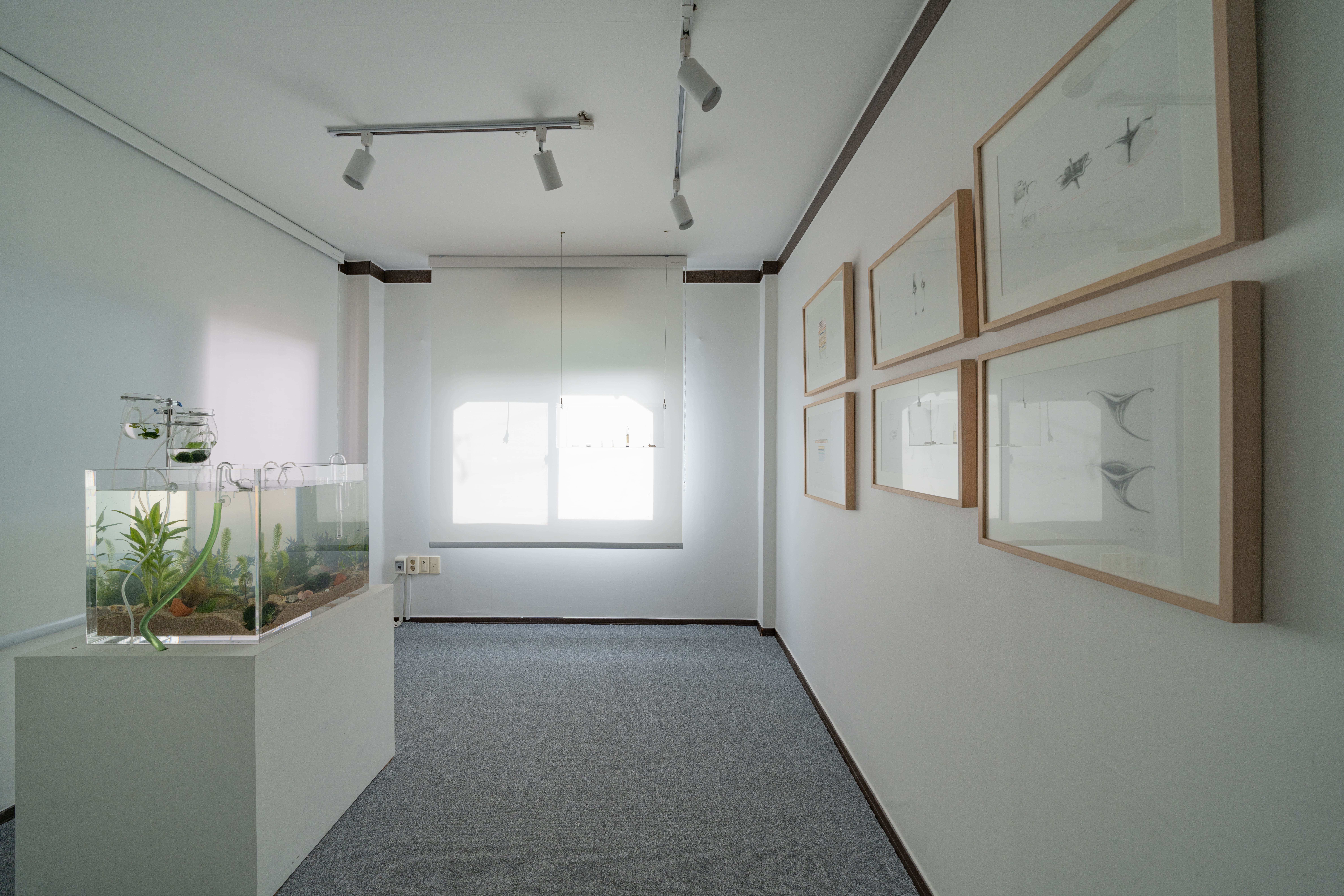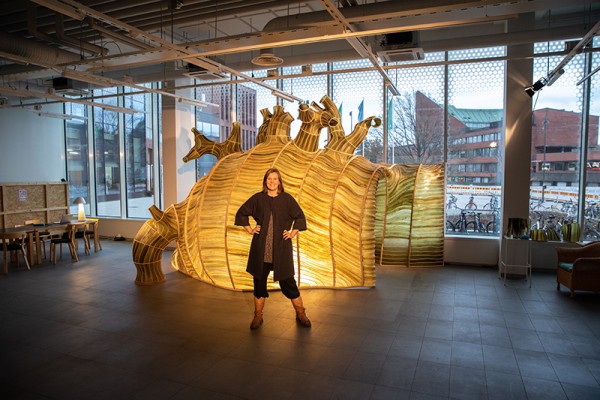How to Become Wholesome
2022, Water tank, glass containers, bespoke pump system, organic materials, drawings, research elements, 150×65×65cm.

Description
Would you adapt your body to “serve” marine ecosystems and keep aquatic organisms healthy?
How to Become Wholesome investigates how bodily waste, in the broadest sense (tears, sweat, and urine), may contribute towards the wellbeing of aquatic organisms.
Extending from Kasia’s renowned installation How to Make an Ocean, where the artist collected and analyzed the chemical composition of human tears in order to feed tiny marine ecosystems, this work poses a series of questions such as: How to care for one's own body so that it becomes the most nutritious for a marine ecosystem? What tools are needed to harvest those nutrients from the human body? How do we test harvested substances for their suitability? What are the aesthetics of this process and of developing connections between the human body and the ocean?
The ongoing research behind this project is presented in a series of records and tools. Diet diaries and records of the chemical composition of Molga’s bodily secretion (Records of Transforming into Resource); a series of sketches of tools for helping to harvest nourishment from bodily waste (Tools for Harvesting Nourishment); and invented for purpose lab instruments.
Most importantly, at the heart of the current edition of this installation, are 3 to 4 interconnected water tanks. In these tanks, water made out of various bodily sources mixes with seawater, influencing the growth and nourishing the development of specially selected aquatic plants.
How to Become Wholesome draws a parallel between the wellbeing and survival of the human body with that of non-human species and reminds us that we are very much part of nature and the ocean, not a separate entity.



